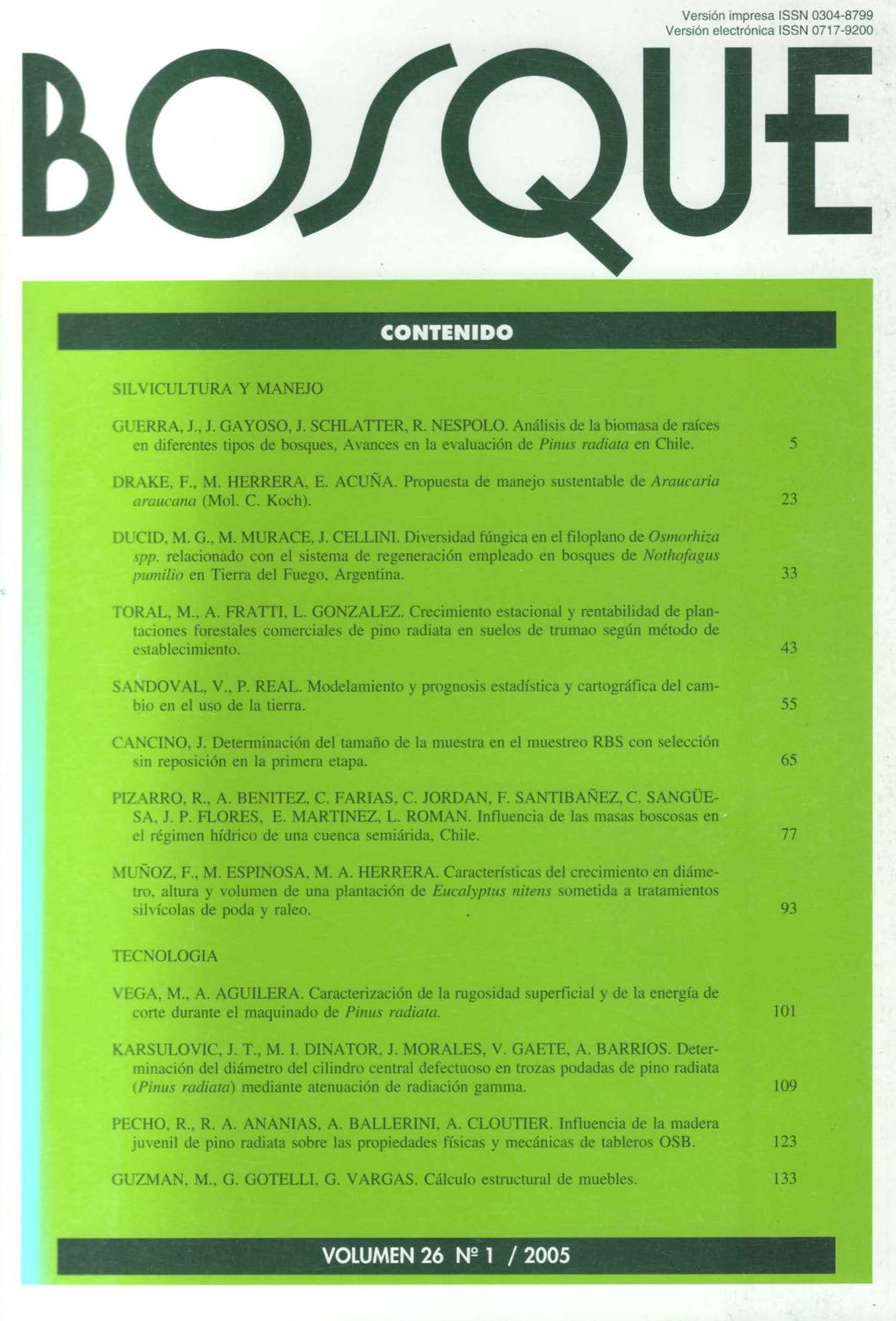Surface roughness and cutting power description for machining radiata pine
Main Article Content
Abstract
A study was made of wood fiber directions and the resulting surface roughness of radiata pine during a planing process employing acoustic emission control. There have been some studies of the planing process for radiata pine in situations where surface quality problems arise when machining conditions are not well controlled. It is known from previous studies that acoustic emission signals (RMS) are a good monitoring element of the surface roughness under different cutting conditions. The variations in acoustic signals are related to the roughness and to chip formation. The purpose of this study was to establish the most suitable machining conditions for planing radiata pine to achieve the required surface roughness and to determine its relationship to the acoustic emission signals so that surface quality can be easily controlled.

